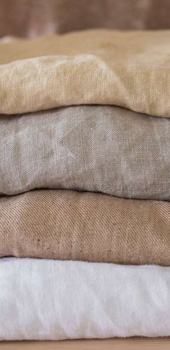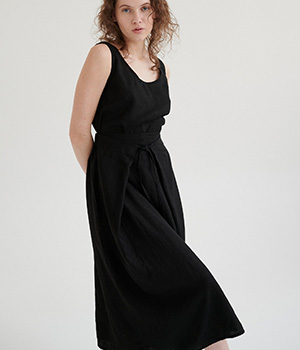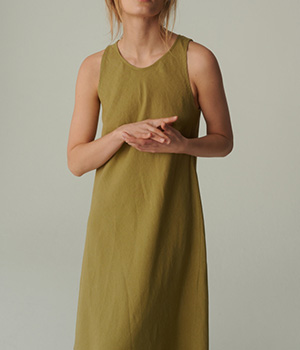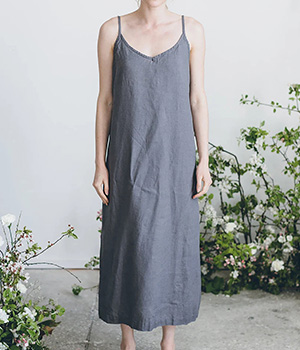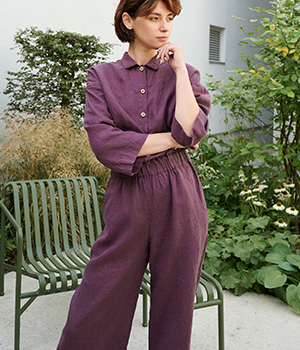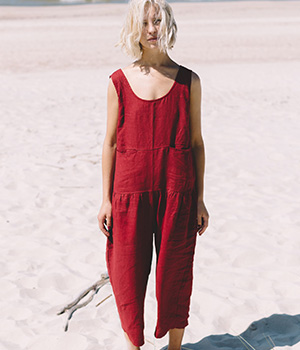Is 100% linen better than cotton?
Introduction
Is 100% linen better than cotton? This question is central to our discussion today. As leading Linen Shirt Manufacturers, LinenWind understands that both materials have passionate advocates. But when you’re investing in quality linen shirts, dresses, or home textiles, informed choices matter. In this comprehensive blog, we’ll compare linen and cotton across key dimensions: comfort, durability, sustainability, performance, and care. You’ll also learn why choosing 100% linen from reputable Manufacturers like LinenWind elevates your experience—and why our minimum order quantity of just 30 pieces makes premium linen accessible.
Linen vs. Cotton: Origins and Composition
Linen, derived from the flax plant, boasts a history dating back thousands of years. On the other hand, cotton comes from cotton bolls. Both are natural fibers, yet their botanical origins shape their characteristics—from fiber structure to texture and strength.
Linen features long, glossy bast fibers, creating a slightly rougher but elegant texture.
Cotton has short staple fibers, yielding a soft and fluffy feel that warms quickly.
This structural difference influences everything from breathability to durability and even dye uptake. As experienced Linen Shirt Manufacturers, Linenwind leverages linen’s natural strengths while refining comfort through expert weaving and finishing.

Comfort and Feel: Breathability & Softness
When comparing linen and cotton, comfort is a top factor for most shoppers.
Breathability: Linen naturally wicks moisture and allows airflow, keeping the wearer cool and dry—even in high heat. When air flows through linen fibers, perspiration evaporates swiftly. Cotton also breathes well, but it retains more moisture, making linen the superior choice in hot, humid climates.
Softness: New linen can feel crisp or slightly coarse, but quality linen softens attractively over time. Cotton begins life soft and cozy but lacks linen’s crisp structure. LinenWind’s pre-washed, enzyme-finished 100% linen shirts deliver instant softness and improve with wear.
Despite its initial texture differences, high-end linen fabric often wins comfort tests because of its cooling properties and adaptability.

Durability and Longevity
Durability is where linen shines. Its bast fibers are among the strongest natural fibers, and it becomes even stronger when wet. Over time, cotton loses integrity faster—fibers break down with repeated wash cycles.
Linen garments and textiles offer long-lasting value. As leading Linen Shirt Manufacturers, LinenWind crafts pieces that can withstand frequent use and laundering while preserving structure and appearance. This longevity represents a strong return on investment, especially for high-rotation wardrobe staples and hospitality linens.
From a performance standpoint, choosing 100% linen is an investment in enduring quality.
Moisture Wicking & Thermal Regulation
Moisture management and thermoregulation are critical in deciding linen vs. cotton:
Linen's hollow fibers absorb moisture, transport it to the fabric surface, and release it quickly through evaporation—maintaining comfort even on hot days.
Cotton absorbs including moisture but holds it longer, leading to damp fabrics in warm weather and slower drying times.
In cooler climates, linen’s thermal insulation is surprisingly efficient—trapping warmth close to the body. This means linen provides year-round comfort, while cotton often needs to be layered. LinenWind’s 100% linen shirts and dresses are designed to deliver this climate-adaptive performance in stylish forms.

Environmental Impact & Sustainability
Environmental awareness is increasingly influencing fabric choices. Here's how linen and cotton compare:
Water Use: Linen (flax) requires about one-third of the water needed by cotton. Flax thrives with natural rainwater and often avoids intensive irrigation.
Pesticides & Fertilizers: Flax cultivation uses low inputs and is naturally pest-resistant. Conventional cotton, in contrast, ranks among the most pesticide-intensive crops.
Biodegradability and Soil Enrichment: Both fibers biodegrade naturally, but flax straw can enrich soil when processed after harvest.
As responsible Linen Shirt Manufacturers, LinenWind sources high-quality European flax and provides full transparency on cultivation, weaving, and finishing. Choosing 100% linen from eco-conscious Manufacturers aligns with environmental values while delivering superior performance.

Dyeing, Color Retention & Aesthetics
Color is vital in linen shirts and dresses. Linen’s fiber structure accepts dyes deeply, producing rich, long-lasting hues. LinenWind applies advanced, eco-conscious dyeing methods to ensure vibrant, lasting colors. Over time, linen develops a graceful patina—cotton fades more noticeably without linen’s refined texture.
Additionally, linen’s natural drape and structure resist sagging and shape loss. LinenWind’s designs highlight crisp collars, seams, and relaxed silhouettes that keep their elegance after countless wears and washes.
Care & Maintenance: Ease and Longevity
Caring for linen vs. cotton differs primarily in ideal washing and drying conditions:
Linen: Machine-washable in cool to warm water with mild detergent. Linen should air-dry or tumble-dry low to avoid excessive shrinkage. While linens can wrinkle, many appreciate the elegant, lived-in look. LinenWind offers pre-washed linen to minimize shrinkage and wrinkling. Ironing is optional.
Cotton: Also machine-washable and tolerant to warmer water and dryer heat but may shrink moderately. Cotton wrinkles less crisply but can soften and lose structure faster, especially if overwashed.
Overall, linen care is straightforward—with proper attention, linen garments outlast and outperform comparable cotton items.
Price and Value Comparison
Pure linen garments often come with higher price tags than cotton. The reasons include:
More labor-intensive harvest, processing, and weaving
Use of premium-grade long-staple fibers
Greater durability and longevity
However, when cost-per-wear is considered, linen often proves more affordable over time. Linen shirts and home textiles from LinenWind offer robust durability, sustained appearance, and climate-adaptive comfort—delivering exceptional value.
For businesses or boutiques ordering 30+ pieces, LinenWind’s MOQ is competitive and ideal for both bulk orders and private-label needs.
Linenwind Credentials as Trusted Manufacturers
When selecting linen Manufacturers, credentials and process transparency matter:
Linenwind has over a decade of expertise supplying privately labeled linen garments and textiles.
Our team oversees each stage—from sourcing premium European flax to weaving, dyeing, tailoring, and quality control.
We offer certifications (e.g., OEKO-TEX 100, GOTS) when requested—reinforcing our environmental and safety standards.
Linenwind commitment to EEAT (Experience, Expertise, Authoritativeness, Trustworthiness) is evident: We are experienced Manufacturers, offer technical expertise, maintain authority through certifications, and deliver honesty in sourcing and workmanship.
Applications: Home Textiles vs. Apparel
100% linen excels in applying across both home and apparel categories:
Apparel: Linen shirts, dresses, trousers, and blazers enjoy a refined yet relaxed elegance. Linenwind pieces combine tailored structure and soft drape—ideal for both casual and professional settings.
Home textiles: Bedding, curtains, table linens—features like high absorbency, natural antibacterial properties, and low-pilling make linen ideal. Linenwind offers matching ranges for hospitality and boutique retail.
Cotton is common in apparel and home textiles but can degrade faster and lack linen’s aesthetic and performance qualities over time.

Choosing the Right Fabric Weight and Weave
As Manufacturers, LinenWind guides clients through Linen fabric selection:
Lightweight linen (~115–150 gsm): Ideal for summer-friendly garments.
Midweight linen (~150–200 gsm): Versatile for shirts and home linens.
Heavyweight linen (200+ gsm): Robust coats, upholstery, towels.
We offer open plain weaves for breathability and tighter weaves for structure. Each weight and weave influences drape, opacity, and performance—ensuring the perfect match for your product needs.
Fabric Blends vs. 100% Linen
Some manufacturers offer linen blends (e.g., linen-cotton or linen-viscose) to soften texture or reduce cost. While blends may feel softer initially, they compromise durability, breathability, and linen’s signature characteristics.
LinenWind specializes in 100% linen—preserving the natural benefits that blends dilute. If blends are desired, we recommend blends only for specific use-cases, and we clearly highlight the composition for transparency.
Case Study: Linen Shirts for Boutique Retailers
To illustrate linen vs. cotton, consider just one example:
A boutique retailer ordered 100 cotton shirts and 100 LinenWind 100% linen shirts. Over one year:
Linen shirts retained shape, color, and fabric integrity after 50+ washes, while cotton shirts showed fading, sagging, and thinning after ~30 washes.
Customers rated linen shirts 20% higher in comfort during summer months.
The cost-per-wear analysis favored linen: though 25% more expensive initially, linen offered double the usable life.
This demonstrates linen superior value—even with a MOQ of 100; LinenWind’s MOQ of 30 makes linen accessible for smaller orders.

Is 100% Linen Better Than Cotton?
Now, let’s answer the original question directly: Is 100% linen better than cotton? Based on performance metrics, sustainability, comfort, and longevity—the answer leans strongly toward linen.
From its exceptional moisture-wicking ability to its lower environmental footprint, linen outperforms cotton in most scenarios where breathability, elegance, and durability are critical. While cotton offers instant softness and affordability, it doesn’t match linen’s sophistication or lifespan.
Linenwind, as experienced Linen Shirt Manufacturers, provides expertly woven and tailored 100% linen apparel that merges the best of nature and craftsmanship. If you're looking to stand out in the retail or hospitality market, our eco-conscious, stylish, and long-lasting linen garments are the superior choice.
How to Place a Bulk Order with Linenwind
Our mission at LinenWind is to make high-quality, sustainable linen accessible for small brands, boutiques, and designers. That's why we offer a Minimum Order Quantity (MOQ) of just 30 pieces. Whether you want embroidered linen shirts, oversized resort wear, or custom-designed linen dresses, we guide you through:
Fabric selection: We help choose the right GSM, weave type, and color palette
Custom labeling: Include your brand’s private label on the final product
Sample approval: You get prototypes to approve before bulk production
Timely delivery: Transparent production timelines and international shipping
Visit Linenwind’s About Us Page to learn more about our commitment to craftsmanship, sustainability, and innovation.
FAQs About 100% Linen vs. Cotton
Is 100% linen more breathable than cotton?
Yes, linen is naturally more breathable due to its hollow fiber structure, which helps wick away moisture and allow airflow. This makes it ideal for hot and humid climates.
Does linen shrink more than cotton?
Linen can shrink if not pre-washed. However, LinenWind pre-washes all fabric to minimize shrinkage and offer consistent sizing for bulk buyers.
Is linen rough or itchy on the skin?
Quality linen, especially from trusted Manufacturers like LinenWind, softens significantly over time. It starts with a crisp texture but develops into a smooth, buttery feel with each wash.
Is linen or cotton better for people with sensitive skin?
Linen is hypoallergenic and naturally antibacterial, making it a great choice for sensitive skin, especially in hot or damp climates where sweat can irritate.
Which fabric is more eco-friendly?
Linen requires less water, fewer pesticides, and enriches the soil. Cotton, unless organic, tends to consume more resources and may contribute to soil degradation.
Is linen suitable for formal wear or just casual?
Linen can be styled both casually and formally. LinenWind’s product line includes sharp collar shirts, drawstring trousers, and even blazers—all tailored in premium linen for an elevated look.

Conclusion
So, is 100% linen better than cotton? For discerning customers who value comfort, sustainability, and durability—the answer is a resounding yes. Linen isn’t just a fabric. It’s a lifestyle choice, a commitment to slow fashion, and a nod to nature’s genius.
As trusted Linen Shirt Manufacturers, LinenWind stands by the beauty and performance of linen. Whether you’re a boutique, eco-brand, fashion label, or hotel chain, we are here to help you scale with sustainable, elegant, 100% linen products.
If you’re ready to upgrade from ordinary cotton to extraordinary linen, explore our product catalog, or contact us for bulk inquiries today. Your customers will feel the difference, and so will the planet.




